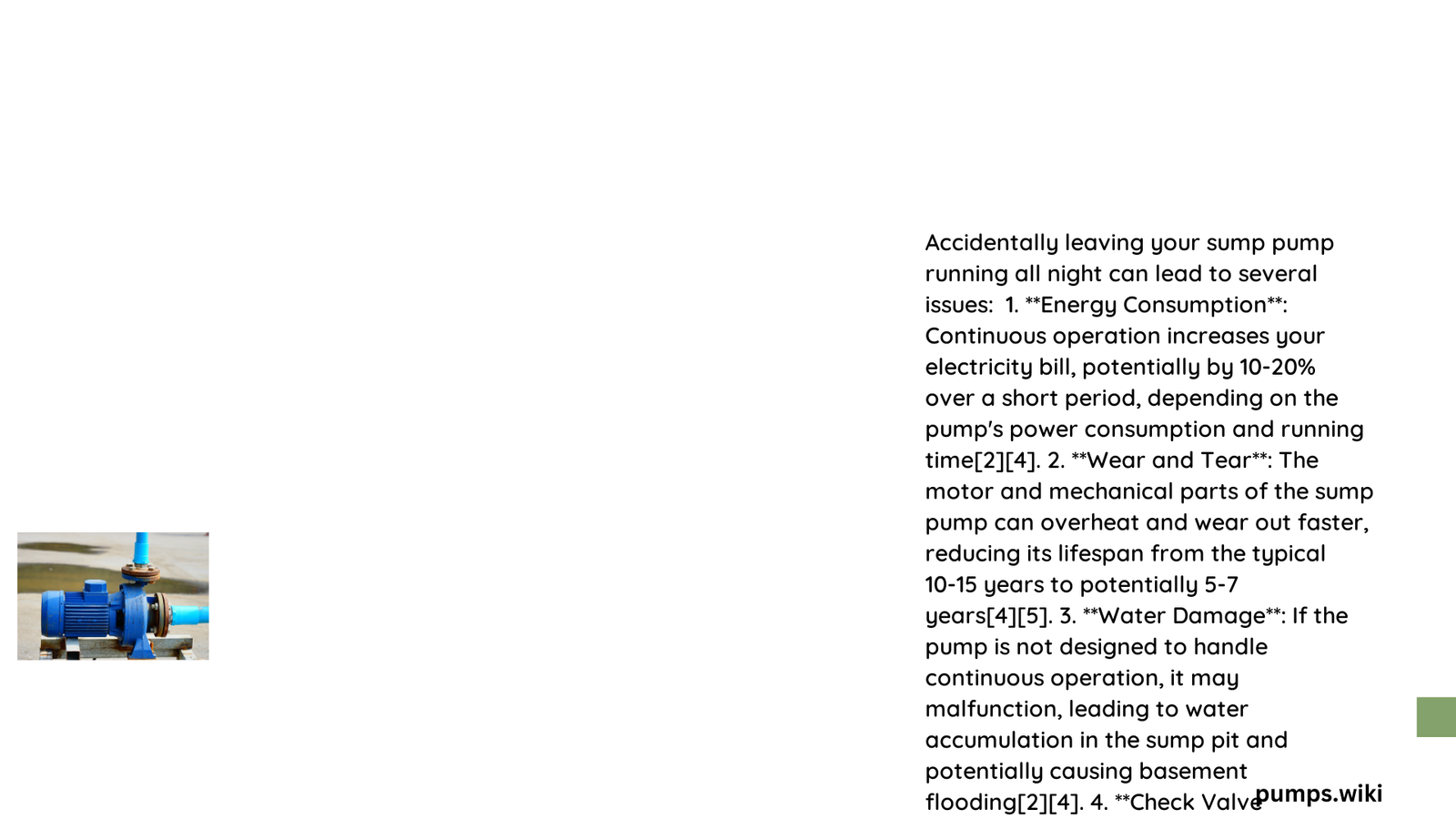Accidentally leaving a sump pump running continuously overnight can trigger a cascade of potential problems, from increased energy consumption to potential mechanical stress on your pump system. Homeowners might face unexpected consequences ranging from minor electrical cost increases to significant risks of equipment failure and potential water management complications.
What Happens When a Sump Pump Runs Continuously?
Can Continuous Operation Damage My Sump Pump?
Continuous sump pump operation can lead to several critical issues:
- Mechanical Stress
- Increased wear on pump components
- Potential premature motor failure
-
Higher risk of overheating
-
Energy Consumption Implications
- Significant electricity cost increase
- Potential strain on electrical systems
| Pump Type | Hourly Power Consumption | 24-Hour Cost Estimate |
|---|---|---|
| Standard Submersible | 0.5-1.5 kW | $1.80 – $5.40 |
| High-Efficiency Model | 0.3-0.8 kW | $1.08 – $2.88 |
Will My Sump Pump Overheat?
Most residential sump pumps are not designed for continuous operation. Extended running can cause:
- Motor temperature elevation
- Reduced lubrication efficiency
- Potential thermal shutdown
- Increased risk of electrical component failure
How Much Water Can Accumulate?
Water accumulation depends on several factors:
- Groundwater table level
- Pump capacity
- Drainage conditions
- Local precipitation
Typical Pump Capacities:
– Standard residential: 1,500-2,500 gallons/hour
– Heavy-duty models: 3,000-4,500 gallons/hour
What Are the Potential Risks?
Continuous sump pump operation presents multiple risks:
- Electrical Hazards
- Short circuit potential
- Increased fire risk
-
Electrical system overload
-
Water Management Problems
- Potential basement flooding
- Moisture-related structural damage
- Mold and mildew development
Should I Immediately Turn Off My Sump Pump?
Immediate recommendations:
- Check pump temperature
- Inspect for any visible damage
- Listen for unusual sounds
- Verify water levels in sump pit
- Consider professional inspection if concerned
How Can I Prevent Future Incidents?
Preventive strategies include:
- Install automatic shut-off mechanisms
- Use smart home water monitoring systems
- Regular maintenance checks
- Consider backup pump systems
- Implement moisture detection sensors
Expert Recommendations

Professional plumbers suggest:
– Annual sump pump professional inspection
– Replace pump every 7-10 years
– Maintain clean sump pit
– Test pump functionality quarterly
Cost Considerations
Potential Expenses:
– Pump replacement: $200 – $800
– Water damage repair: $3,000 – $10,000
– Electrical system check: $100 – $300
Final Thoughts
While accidentally running a sump pump overnight isn’t always catastrophic, monitoring and prompt action can prevent significant issues. Regular maintenance and understanding your system’s limitations are key to long-term reliability.
References:
– Sump Pump Maintenance Guide
– Water Damage Prevention
– Electrical Safety in Home Systems
